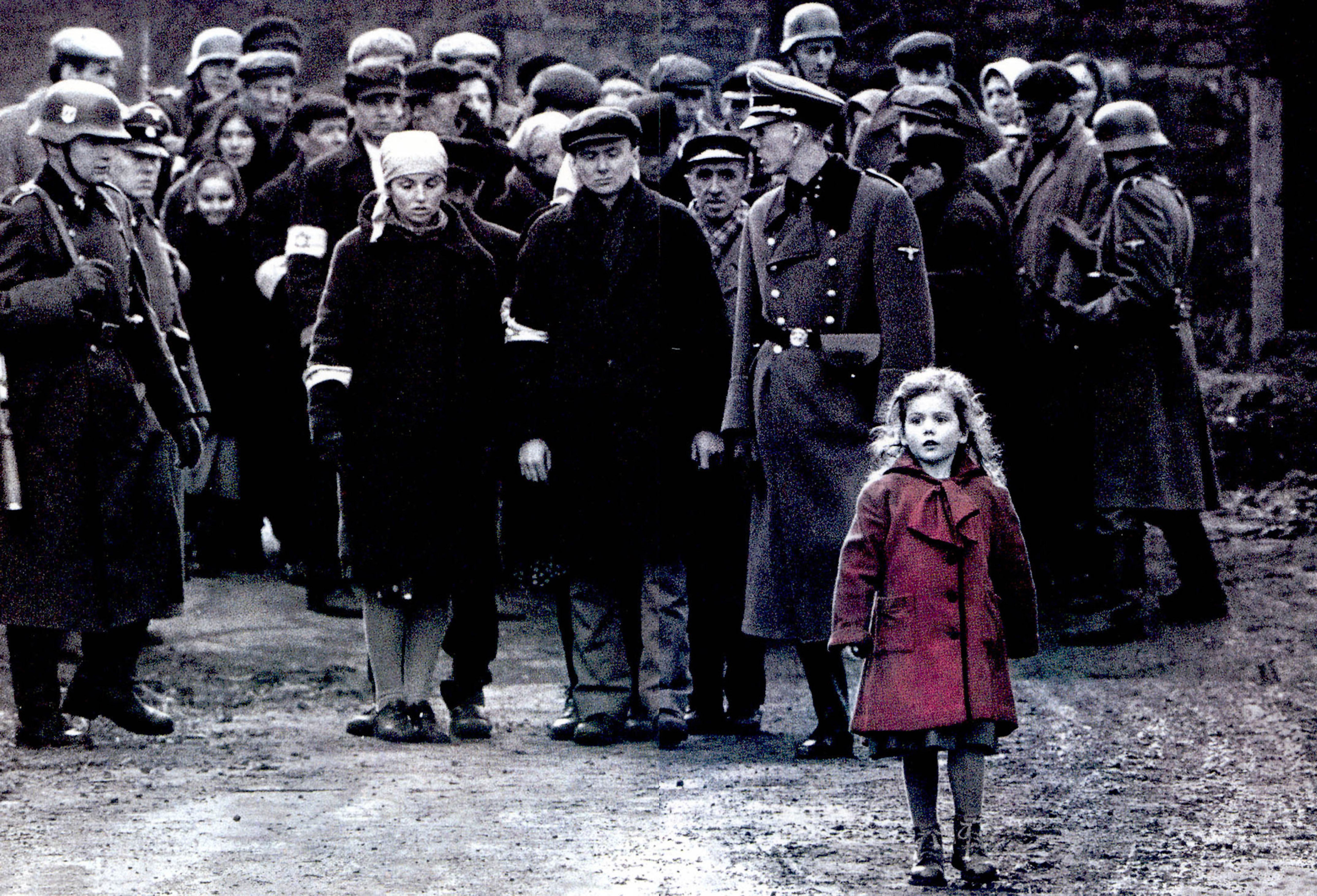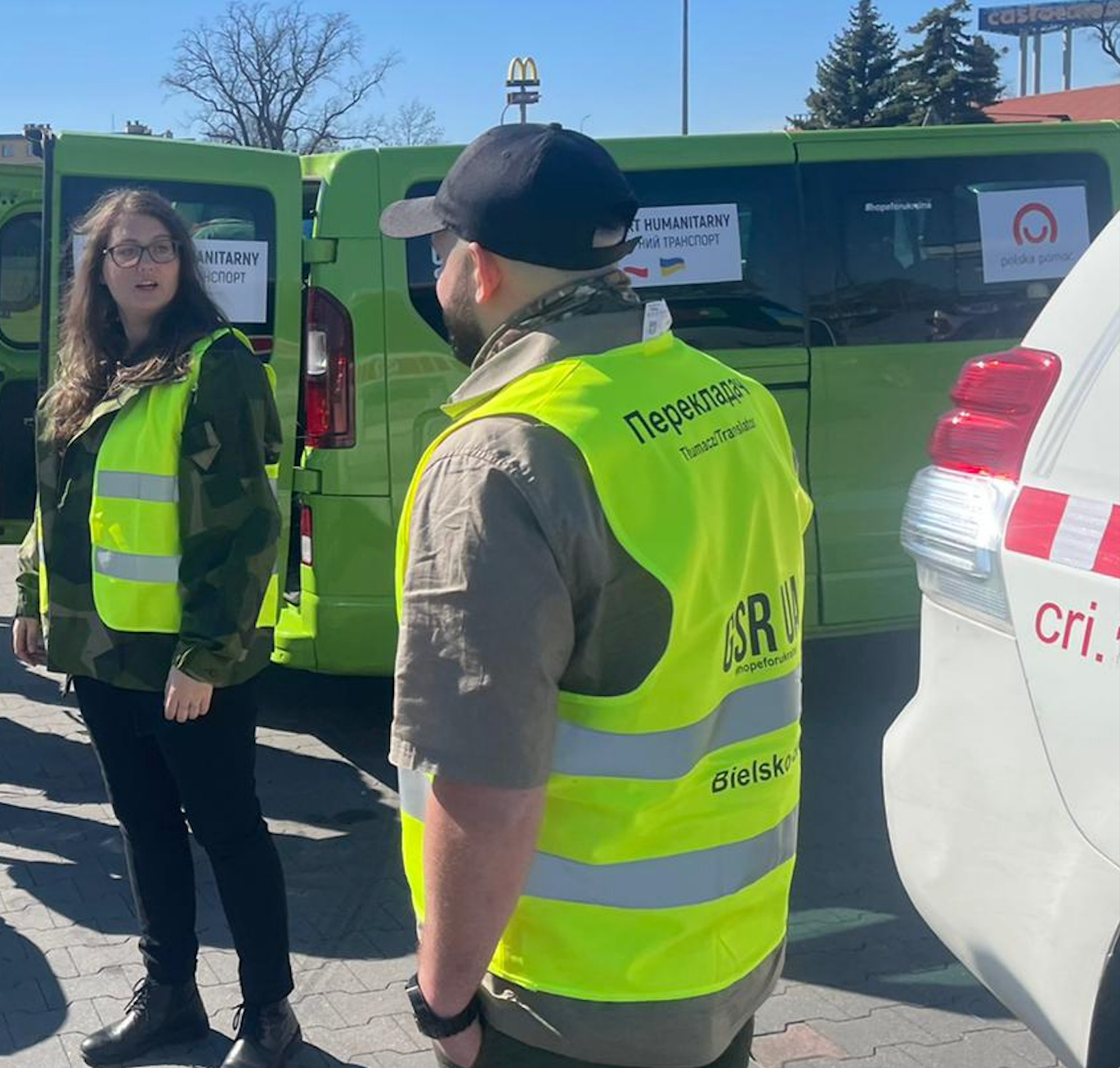
Oliwia Dabrowska is a normal person who never meant to become famous. She’s 32 years old and lives in her native Poland with her husband and their rescue dog. She used to be a librarian but switched to working as a freelance copywriter for better pay. She loves books and occasionally volunteers for a dog rescue organization.
“It’s hard to say something about myself,” she tells The Independent. “I can tell you facts, but facts don’t describe me. I cannot judge myself. I hope I’m a good person. That’s all I can say.”
Yet to millions of people, one image of Dabrowska is overwhelmingly familiar. When she was three years old, she was cast in Schindler’s List. She portrayed the girl in the red coat, one of few elements of color in the mainly black and white film. To director Steven Spielberg, the girl in the red coat symbolized the inaction of governments during the Holocaust: “Nothing was being done to slow down the industrialized progress the Nazis were making in the total annihilation of European Jewry,” the director once told journalist Richard Schickel. “... So that was my message in letting that scene be in color. It was as obvious as a little girl wearing a red coat walking down the street.”
The way she recounts it, Dabrowska’s casting in Schindler’s List was almost an accident. When the film entered production in Krakow, she says, the production team needed a lot of extras. She jokes that half of the population in the 700,000-people city must have become involved in the movie. Her mother, her grandparents, her aunt, and several of her mother’s friends were all extras. At some point, Dabrowska’s mother received information for the casting of the girl in the red coat. Dabrowska attended the audition with her grandfather, because no one else was available to take her.
“I’ve never asked [Spielberg] why he chose me, but I think it was because I wasn’t shy, I wasn’t afraid,” she says. “And I wasn’t interested, actually. I wasn’t trying to show Steven Spielberg my best face. There were other girls who were there with their mothers. It was like a pageant, a competition.” She laughs at the memory: “My grandfather wasn’t interested either. He just took care of me. So I could do whatever I wanted.” In the end, she believes her natural behavior was the reason she was picked.

Dabrowska doesn’t remember much from filming. “My actual memories are more feelings than fact,” she says. A lot of the anecdotes she knows were recounted to her by her mother. She did impact one scene specifically, she tells me: at one point during filming, the girl in the red coat had to go under a bed. Dabrowska was afraid of the dark (and possible spiders) and didn’t want to go in with her head first, but rather her legs first. “Steven Spielberg accepted this change, and that’s in the movie,” she says with a smile. “So I had a little bit of influence.”
After the Russian invasion of Ukraine on 24 February, Dabrowska was reminded of the character she played — and it pushed her to do something. To her, the girl in the red coat was a symbol of trauma, embodying the atrocities of the Holocaust and of the Second World War. On 9 March, she shared an artwork of the same girl, this time in a blue coat, against a yellow background – matching the colors of the Ukraine flag. Inspired by conversations with two of her friends, Dabrowska has reimagined the girl in the blue coat as representing healing in the aftermath of trauma. “She was always the symbol of hope,” she wrote on Instagram. “Let her be it again.” The post came as Dabrowska got involved with on-the-ground volunteers to assist Ukrainian refugees, helping them find housing and transportation. The group started out small but now has more than 200 members. Dabrowska now devotes most of her time to volunteer work.
In one instance, Dabrowska helped organize an effort to deliver insulin to diabetic people. At a different time, a 19-year-old girl texted her that she’d be arriving by train and was looking for a place to stay. “It’s not very safe for girls who are alone,” Dabrowska says. “There are a lot of bad people in the world.” She texted the young woman back promptly and helped her find somewhere to go. Once, Dabrowska was home after a long day when she got a call around 10pm. A mother was traveling alone with her child; she was scheduled to take a bus to Berlin, Germany, the next day but needed somewhere to spend the night. Dabrowska called a friend and helped ensure the mother stayed in a safe place.
Dabrowska and the rest of her group have a wide remit in terms of what they will do and who they will help. They have coordinated transportation for people crossing the border from Ukraine into Poland. They have helped refugees find housing and a way to travel there. They have coordinated with other volunteers to help meet everyone’s needs. And it hasn’t gone unnoticed.
Dabrowska’s volunteer work, paired with the imagery of the girl in the blue dress, have made headlines around the world. When we speak, she tells me she has been doing interviews for two weeks, sometimes five or six per day.
This has been her first foray back in the public eye since her acting career. After Schindler’s List, Dabrowska did commercials and had a few more screen credits. Ultimately, though, she stopped acting because she didn’t want to spend her childhood attending casting calls. “Maybe I wasn’t that talented,” she says. “It was a different time. There was no internet, no computer in my home. So there were fewer possibilities to find opportunities.” She went back to normal life.

Dabrowska speaks of her work with refugees with respect, empathy, and compassion. The best way people can help, from the US and other countries, is through financial donations, she says. She has started an online fundraiser, aiming to raise €43,000 ($46,000 or £36,000). If people want to donate goods, they can send first-aid supplies (she mentions bandages and tourniquets specifically), as well as clothes for Ukrainian soldiers, shoes, socks, brand-new underwear, and food with a long shelf life, such as canned goods. But money, she says, is the most important resource, because volunteers can allocate it to the most pressing needs. “People don’t want to talk about money. They don’t like it,” she adds. “But I must be honest: it’s important. We need that help.”
Working with refugees, she has felt the weight of the trauma their generation will experience. “I will never understand them, but I can do whatever I can to help them,” she says. “But it’s also a very sad feeling, because even if I’m doing as much as I can, it won’t ever be enough. The needs are bigger than our volunteer group’s capacities. … This is very difficult, but we don’t stop. We won’t stop.”







